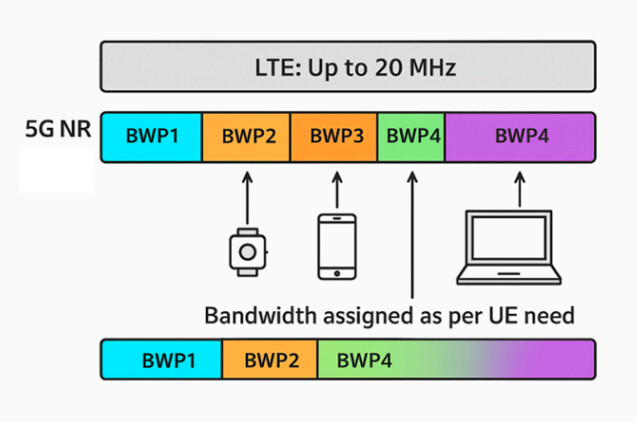Bandwidth Part (BWP) in 5G NR
Introduction to Bandwidth Part (BWP)
With the evolution from LTE to 5G NR, wireless networks have gained the ability to support extremely wide channel bandwidths—sometimes up to 100 MHz in sub-6 GHz bands (FR1) and up to 400 MHz in mmWave bands (FR2). While this flexibility unlocks unprecedented peak data rates, it also creates new challenges for both network operators and UE. Not every UE is capable, or needs, to always process the entire bandwidth.
This is where the concept of the Bandwidth Part (BWP) comes in. In 5G NR, a BWP is a mechanism that allows the network to split the overall carrier bandwidth into smaller, more manageable frequency segments. Each segment can be independently configured and assigned to the UE, enabling the network to optimize resource allocation, power consumption, and device complexity based on the requirements of different services.
PDF: ![]()
Bandwidth Part (BWP) in 5G NR (By Ravi Shekhar Singh).pdf (2.6 MB)
LinkedIn: ![]()
